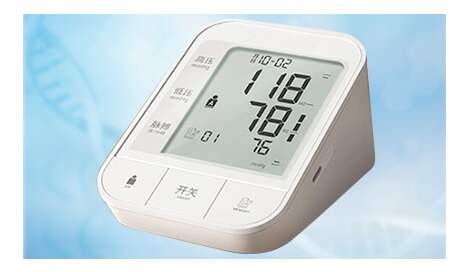The medical technology field is rapidly changing, and advanced display solutions are crucial for improving diagnostic accuracy, patient care, and medical workflows. TFT touch screen displays have become an essential component of modern medical equipment. This blog post examines the significance, benefits, and future potential of TFT touch screens in the medical industry.
Introduction to TFT Touch Screen Displays in Medical Equipment
Thin Film Transistor (TFT) displays have long been recognized for their high-resolution, energy efficiency, and durability. When combined with touch screen technology, these displays offer an intuitive and interactive interface that is perfectly suited for the demanding environment of medical equipment. Whether used in diagnostic devices, patient monitoring systems, or surgical instruments, TFT touch screen displays provide unparalleled clarity and ease of use.
Key Benefits of TFT Touch Screen Displays for Medical Equipment
1. Enhanced Diagnostic Accuracy
High-resolution TFT displays are essential for medical imaging devices such as ultrasound machines, X-ray viewers, and MRI scanners. These displays provide clear, detailed images that help medical professionals make accurate diagnoses. Touch screen interfaces further enhance usability by allowing doctors and technicians to zoom in, adjust contrast, and annotate images with simple taps and gestures.
2. Improved Patient Care
In patient monitoring systems, TFT touch screens offer a user-friendly interface for healthcare providers to access real-time data. Nurses and doctors can quickly check vital signs, adjust settings, and update patient records without the need for additional devices. This seamless interaction improves patient care by reducing the time required for manual data entry and minimizing the risk of errors.
3. Compliance and Reliability
Medical equipment must adhere to strict regulatory standards, such as CE and FDA certifications. TFT touch screen displays are designed to meet these requirements, ensuring that they are safe, reliable, and durable. These displays are also built to withstand the harsh conditions of medical environments, including exposure to disinfectants, frequent use, and potential impacts.
4. Customization and Flexibility
TFT touch screen displays can be customized to fit various medical applications. Manufacturers can tailor the screen size, resolution, and touch sensitivity to meet specific needs. For example, a small, high-resolution display may be required for a portable diagnostic device, while a larger screen may be necessary for a central patient monitoring station.
Technological Advancements
The field of TFT touch screen displays is continuously evolving, driven by advancements in materials, manufacturing processes, and software integration. Some of the latest innovations include:
1. Multi-Touch Capabilities
Advanced touch screen technology supports multi-touch gestures, allowing medical professionals to perform complex actions with ease. For example, surgeons can manipulate 3D images during procedures, while radiologists can quickly compare multiple scans.
2. Anti-Glare and Anti-Reflective Coatings
Medical environments often have bright lighting conditions, which can make it difficult to view displays clearly. Modern TFT touch screens feature anti-glare and anti-reflective coatings that reduce glare and improve visibility, ensuring that critical information is always visible.
3. Integration with IoT and AI
TFT touch screen displays are increasingly being integrated with Internet of Things (IoT) and Artificial Intelligence (AI) technologies. These integrations enable medical devices to communicate with each other, share data, and provide intelligent insights. For example, a patient monitoring system can automatically alert healthcare providers if a patient's vital signs indicate a potential issue.
Challenges and Considerations
1. Cost
High-quality medical-grade displays can be expensive to produce, which may impact the overall cost of medical devices. Manufacturers need to balance cost with performance to ensure affordability without compromising quality.
2. Regulatory Compliance
Medical equipment must meet stringent regulatory standards, and displays are no exception. Manufacturers must ensure that their TFT touch screens comply with all relevant regulations, such as CE and FDA certifications. This process can be time-consuming and costly.
3. User Training
While touch screen interfaces are generally intuitive, medical professionals may require training to fully utilize the advanced features of these displays. Manufacturers should provide comprehensive training materials and support to ensure that healthcare providers can maximize the benefits of these technologies.
Future Outlook
The future of TFT touch screen displays in medical equipment is promising. As technology continues to advance, we can expect even more innovative features and applications. For example, flexible and foldable displays are already in development, which could revolutionize the form factor of medical devices.
Moreover, the integration of advanced sensors and biometric technologies will further enhance the functionality of these displays. Imagine a medical device that can recognize a healthcare provider's fingerprint or facial features through its display, providing an additional layer of security and personalization.
In the realm of telemedicine, TFT touch screen displays will play a crucial role in enabling remote consultations and diagnostics. These displays will not only provide high-quality visuals but also support interactive features such as real-time annotation and data sharing.
Conclusion
TFT touch screen displays have become an essential component in modern medical equipment, offering unparalleled clarity, interactivity, and reliability. As technology continues to evolve, these displays will play a crucial role in enhancing diagnostic accuracy, improving patient care, and driving innovation in the medical industry.
For producers and healthcare professionals, the essential focus is on utilizing these advancements to develop medical devices that are both effective and easy to use, while also meeting regulatory requirements. By tackling present challenges and adopting future innovations, TFT touch screen displays will persist in transforming the medical technology sector.
Contact us
If you want to explore the latest advancements in TFT touch screen displays for medical equipment or discover how they can be incorporated into your medical devices, feel free to contact us. By working together, we can harness the full potential of this innovative technology to enhance patient care.


